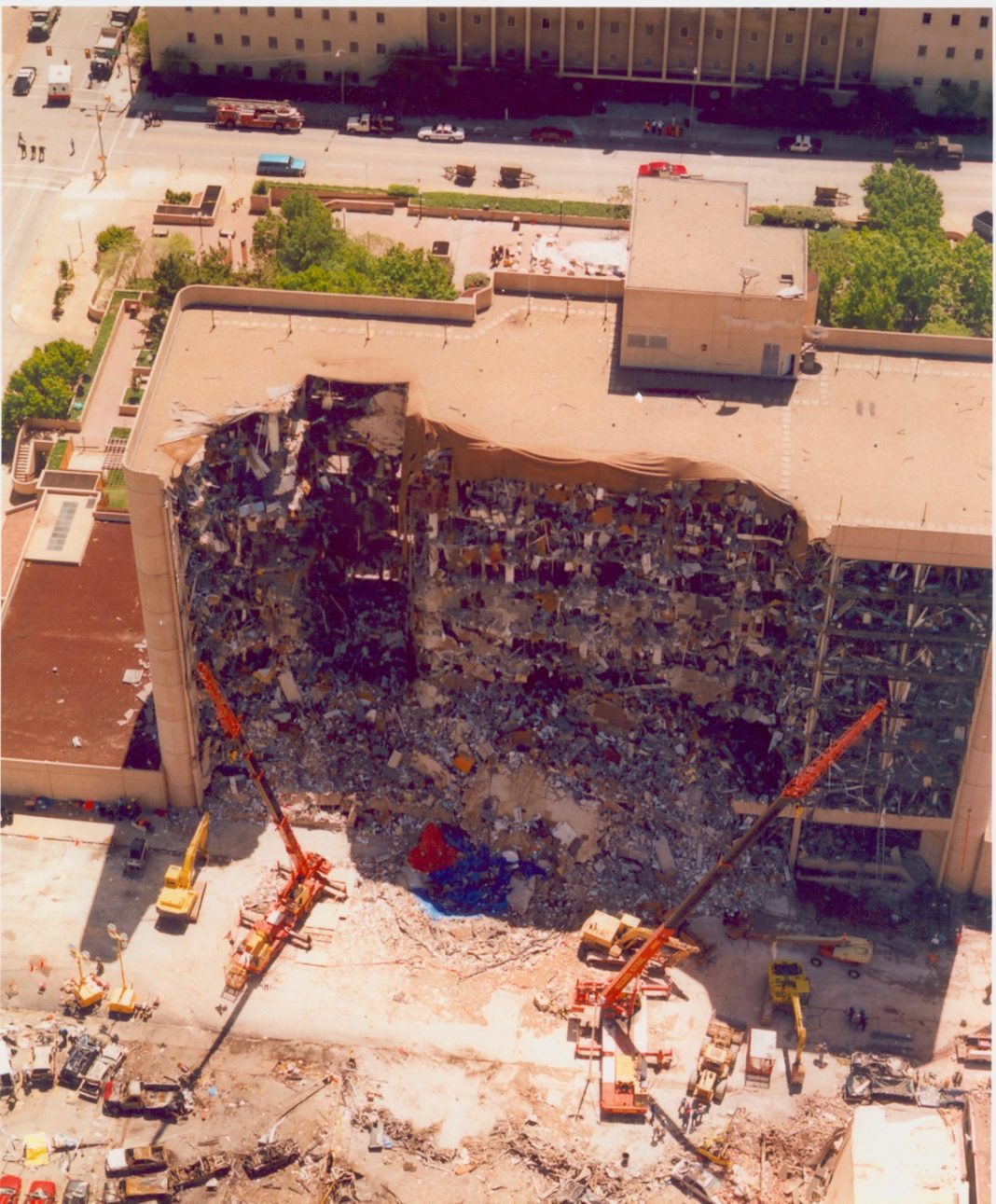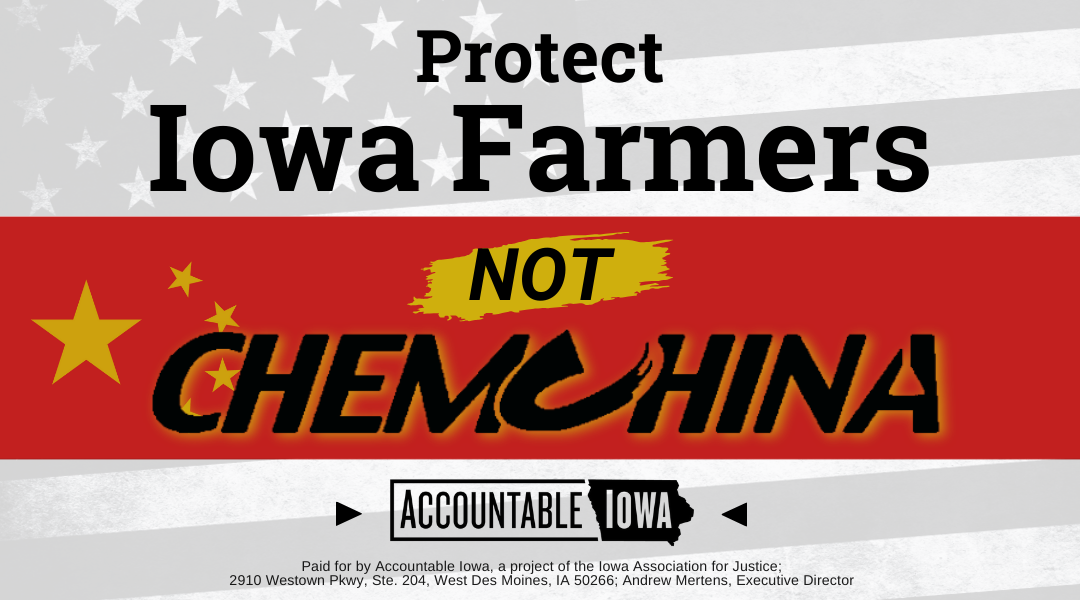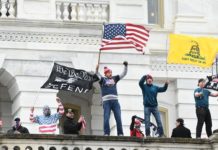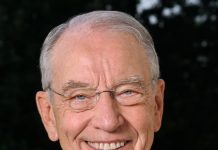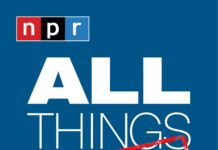Thank you so much for those kind words, Bob.
Every year, on the 19th of April, people gather here at this beautiful memorial to remember those who were killed, those who survived, and those who were changed forever, to commemorate the strength of the community that came together in the face of such great loss, and to celebrate the resilience that makes Oklahoma City a model for communities everywhere.
And every year on this day, wherever I am, I reflect on the loss so many of you endured – the loss that you continue to endure.
In the words of the late Nobel Prize winner Elie Wiesel, at the dedication of the United States Holocaust Memorial Museum in Washington:
“‘For the dead and the living, we must bear witness.’ For not only are we responsible for the memories of the dead, we are also responsible for what we are doing with those memories.”
We bear witness so that younger generations – those who do not know firsthand about the bombing of the Murrah Federal Building – can understand and learn of the tragedy. We tell and retell the story, to instill in them the commitment to prevent tragedies like this from occurring again.
I am deeply humbled to bear witness with you today.
****
26 years ago, I was sitting in my office at the United States Department of Justice in Washington, when an “Urgent Report” came through from the United States Attorney’s Office in Oklahoma City. It was soon followed by a second “Urgent Report,” and then a third.
There had been an explosion at the Murrah building.
Those were the days when our only source of 24/7 news was CNN. My colleagues and I gathered in front of a TV in my office and caught our first glimpse of the destruction.
As information poured in, we gathered again at FBI headquarters to monitor events as a myriad of law enforcement agencies went to work.
An axle that landed some 200 yards away from the site provided a VIN number. The VIN number was traced to a truck manufactured by Ford, purchased by Ryder in Florida, and last rented at a shop in Junction City, Kansas.
A sketch artist drew a picture of the renter, and the FBI made the rounds in Junction City, looking for anyone who had seen him. Lea McGowan, the proprietor of the Dreamland Motel, recognized him, and an all-points-bulletin went out for Timothy McVeigh.
Meanwhile, 48 hours after the bombing, I was on the FBI plane traveling to Oklahoma. In those days, the plane could not make it to Oklahoma in one jump. We had to refuel in Indiana.
When I stepped outside, an agent handed me a cell phone. You would not recognize it today – in those days, a cell phone was the size (and weight) of a brick.
It was Attorney General Janet Reno calling. McVeigh had been found in the Noble County jail.
Charlie Hanger, then a sharp-eyed Oklahoma state trooper – and until this year the Noble County Sheriff – had stopped him 90 minutes after the bombing for a missing license plate.
Charlie noticed that McVeigh was concealing a gun, arrested him for unlawful possession, and brought him to the jail. He was about to be released when the FBI arrived.
When I landed, we drove immediately to Tinker Air Force Base. McVeigh’s first presentment to a magistrate was held there because the federal courthouse had been damaged along with the Murrah building. I argued that McVeigh should be detained, and the magistrate agreed.
We then drove to the bomb site. But first, we had to pass through a ring of Humvees. The National Guard had encircled a radius of more than 16 blocks that had been damaged by the bomb. Shattered glass and crumbled bricks were everywhere.
It was night, but you would not have known it. Bright lights lit the site up like it was midday. The front of the Murrah Building was gone. The parking lot across the street still held the cars that had been flattened by the blast.
An army of first responders was crawling all over the wreckage. They had rushed to the scene from across Oklahoma and across the country. They included rescue workers from my own Maryland community, who had arrived here by truck before I did.
They were sifting through the rubble for survivors and the dead. And everyone was crying.
At the time, we did not know how many people had died. But we did know that the children’s center, which had been at the front of the building, was gone.
Then and there, we made a vow. We promised that we would find the perpetrators, that we would bring them to justice, and that we would do so in a way that honored the Constitution.
A command post was set up in a Southwestern Bell dispatch building, the windows of which had been blown out by the blast. Oklahoma law enforcement officers and federal agents from across the country, worked hand-in-hand to follow the evidence and put the case together.
Then Governor Frank Keating made clear there would be none of the typical inter-agency rivalries that weaken investigations. “Let’s just find the people who did this,” he told me.
And as we continued that task, we never forgot the victims, in whose memories we worked.
We met with some of you who are here today, family members and survivors. We went to the memorial service together. I carried the program for that service in my briefcase, everywhere I went.
Weeks later, we stood with some of you on the rooftop of a nearby building as we watched the remains of the Murrah building being taken down.
We tried to treat you as we would have wanted our own families to be treated.
And in return, you and all of Oklahoma City treated us like family. You took care of us – the first responders, the investigators, and the prosecutors who had converged on the city from across the country.
The Salvation Army kept a food line going to feed us day and night. I don’t remember what I ate, but I know I was never hungry. Nearby tables were piled high with donations for everything from toothpaste to deodorant, from sweatshirts to rain jackets.
A barbershop relocated to the convention center and offered free haircuts. When I look at photographs from those days, I realize I did not visit the barber often enough.
One resident noticed our increasingly disheveled look and even set up a laundry service at the command center.
I cannot express the depth of my gratitude for your thinking of our comfort in your pain. Nor the depth of my admiration for the care that Oklahomans extended to those who were hurting, neighbors and strangers alike.
This came as you know, to be called “the Oklahoma Standard” – a spirit of community service, generosity, and kindness that we had never seen before. The Oklahoma City National Memorial and Museum keeps the Oklahoma Standard going to this day.
As Mr. Kennedy noted, once a week the museum hosts “Better Conversations,” to bring people together people from different backgrounds, different politics and different ideologies, to discuss issues about which they disagree.
It may not change minds, but it fosters understanding. And understanding is the key to living peacefully, side-by-side, looking for common ground instead of allowing our differences to polarize us.
****
It is now 26 years since the bombing. And it is as surprising to me as it is to you that I am now the Attorney General of the United States.
Although many years have passed, the terror perpetrated by people like Timothy McVeigh is still with us. Just last month, the FBI warned of the ongoing and heightened threat posed by domestic violent extremists.
Those of us who were in Oklahoma in April 1995 do not need any warning. The hatred expressed by domestic violent extremists is the opposite of the Oklahoma Standard.
And this memorial is a monument to a community that will not allow hate and division to win.
The Department of Justice is pouring its resources into stopping domestic violent extremists before they can attack, prosecuting those who do, and battling the spread of the kind of hate that leads to tragedies like the one we mark today.
We must all stand together against them – for the safety of our communities, and for the good of our country.
As Kari Watkins, the executive director of the memorial and museum, often says: “On this sacred ground, we must work to find common ground.”
Oklahoma City, you are always in my heart.
Thank you.


